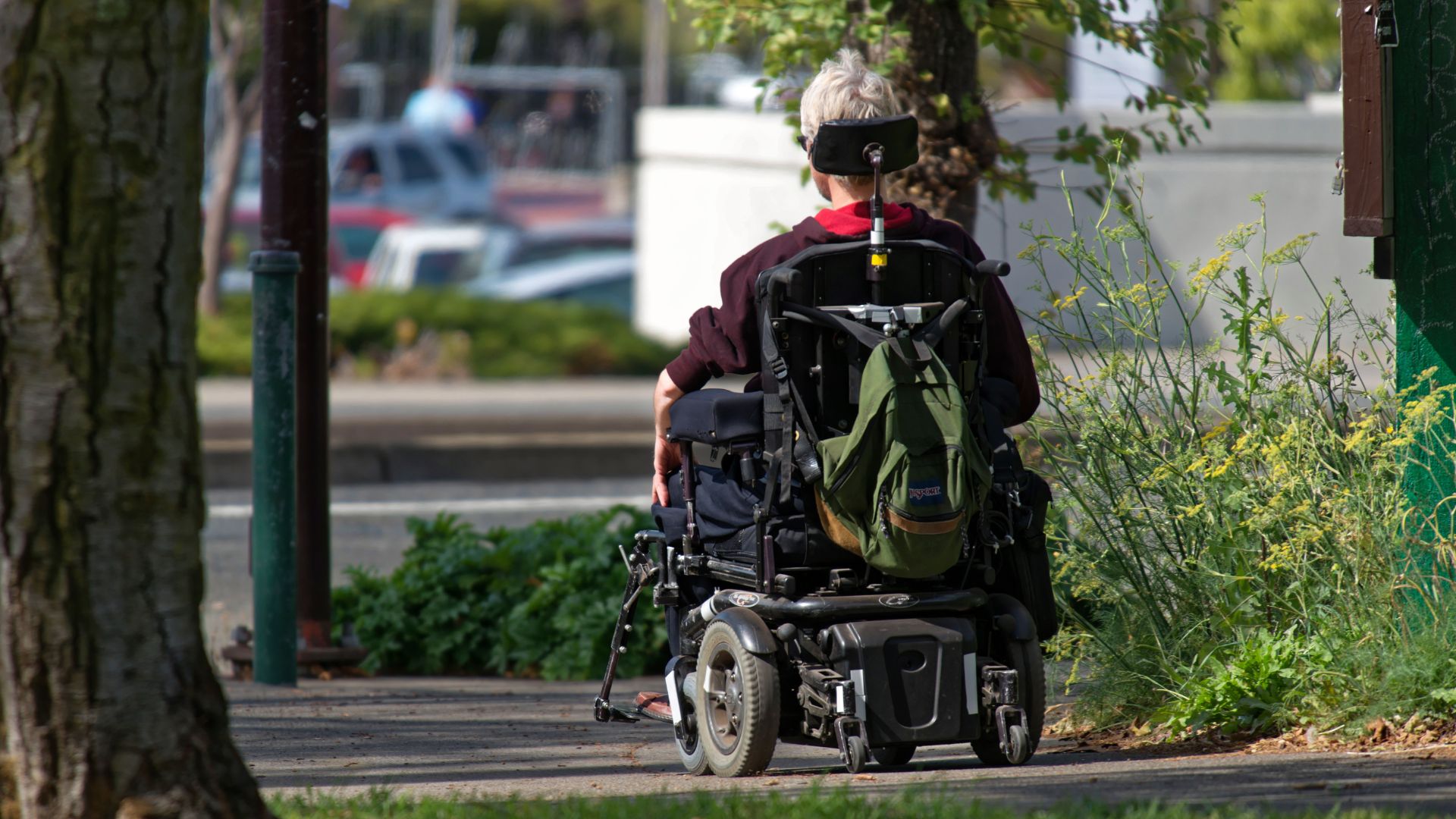Utilizing the upper extremities as primary movers for transfers and mobility is a challenge beyond the limits of a shoulder’s anatomical design. One to two thirds of full-time manual wheelchair users report upper extremity pain, many within the first year of injury (PVACSCM, 2005).
Upper extremity pain decreases independence and quality of life while increasing the need for medical management. Statistics indicate 26% of individuals with upper limb pain require additional help with self-care skills and 28% report decreased independence (PVACSCM, 2005).
Wheelchair use encourages thoracic kyphosis with shortened anterior muscles and lengthened posterior muscles, placing the user at increased risk for upper extremity dysfunction and pain. Common shoulder pathologies associated with wheelchair use are “impingement syndrome, capsulitis, osteoarthritis, recurrent dislocations, rotator cuff tear, bicipital tendinitis, and myofascial pain syndrome… .”
Manual wheelchair users should also be aware of body mechanics with other repetitive activities of daily living. Transfers in and out of wheelchairs can damage the shoulder(s) and wrist(s). The Paralyzed Veterans of America Consortium for Spinal Cord Medicine recommends avoiding extreme wrist extension as well as maximal shoulder extension with internal rotation and abduction during weight bearing as this posture promotes CTS and shoulder impingement. These postures are utilized frequently in lateral transfers. Ambrosio et al. suggests bodyweight, in addition to seat position and duration of disability impact shoulder pain in full-time manual wheelchair users.
Nyland et al. reports that those who returned to work after spinal cord injury weigh less and have more aerobic power. There is a positive correlation between upper limb pain and unemployment (PVACSCM, 2005). Comfortable and functional wheelchairs allow patients of working age to re-engage in work tasks.
While repetitive motions and extreme joint angles are obvious contributors to pain, age should also be noted an important risk factor for shoulder pain. It is more indicative of the risk for shoulder dysfunction than years of manual wheelchair use. Advanced age strengthens the need for the lightest and most customizable wheelchair. Upper extremity pathologies due to depot manual wheelchair use only hastens the path to dependence on even more costly powered mobility.
Clinicians should be careful to avoid the misconception that those who are elderly or have progressive diseases such as multiple sclerosis should not receive more expensive wheelchairs. All patients who utilize a wheelchair as their primary source of mobility will benefit from an ultralight wheelchair.
Ultralight wheelchairs’ fully adjustable axles allow clinicians to optimally position the rear wheel. When the rear wheel is more forward, the shoulder experiences less internal rotation, decreased force, rolling resistance, and propulsion frequency. Concurrently, push angles and pushrim access are increased, improving over-all efficiency.
These cumulative benefits have been widely recognized in recent research (DiGiovine et al., 2012; PVACSCM, 2005).
Reducing distance between the rear wheel axle and shoulder increases access to the handrim, push angle, and contact time.
These lessen required repetitive motions. When the wheelchair user is seated in the wheelchair with hands at the top of the pushrim, it is recommended the forearm to upper arm angle should be between 100 and 120 degrees. This position enables optimal wheel access, upper extremity biomechanics, and cardiopulmonary efficiency (DiGiovine et al., 2012; PVACSCM, 2005; Requejo et al., 2008). The fully adjustable axle of the ultralight wheelchair allows the clinician to orient the user’s rear seat height to make the user low enough for full wheel access, but high enough to avoid harmful shoulder angles.
Clinicians should be mindful when educating new and existing wheelchair users to include recommendations on stroke patterning, transfer technique education, and preventative therapeutic exercises. Preventative range of motion and strengthening exercises can increase users’ ability to handle the daily demands of wheelchair mobility with muscle groups not accustomed to being primary movers. For those who would like an abbreviated tour of online resources for targeted exercises, you may reference the DiGiovine et al. and the Paralyzed Veterans of America Consortium for Spinal Cord Medicine articles.
Due to the above-mentioned characteristics and risks, clinicians should prescribe ultra lightweight
wheelchairs to preserve the comfort, function, and independence of their patients dependent on manual wheelchairs.

author
Alexis Rush
OTR/L, ATP
Alexis Rush is an Assistive Technology Professional specializing in equipment for persons with spinal cord and brain injuries. She graduated from Xavier University with a degree in occupational therapy in 2003 and has her Doctor of Occupational Therapy from the University of St. Augustine. As a therapist, Alexis specialized in acute adult neurologic injury but also worked as a pediatric home health occupational therapist. She now works as a wheelchair provider at a large rehabilitation hospital in Denver, Colorado. Alexis is a mountain sports lover and an avid world explorer.
References
Ambrosio, F., Boninger, M. L., Souza, A. L., Fitzgerald, S. G., Koontz, A., & Cooper, R. A. (2005). Biomechanics and strength of manual wheelchair users. The Journal of Spinal Cord Medicine, 28(5), 407-414.
DiGiovine, C., Rosen, L., Berner, T., Betz, K., Roesler, T., & Schmeler, M. (2012). RESNA position on the application of ultralight manual wheelchairs (Position Paper). Retrieved from https://www.resna.org/sites/ default/files/legacy/resources/position-papers/ UltraLightweightManualWheelchairs.pdf
Liu, H. Y., Hong, E. K., Wang, H., & Salatin, B. (2010). Evaluation of aluminum ultralight rigid wheelchairs versus other ultralight wheelchairs using ANSI/RESNA standards. Journal of Rehabilitation Research and Development, 47(5), 441-455.
Nyland, J., Quigley, P., Huang, C., Lloyd, J., Harrow, J., & Nelson, A. (2000). Preserving transfer independence among individuals with spinal cord injury. Spinal Cord, 38(11), 649-657.
Paralyzed Veterans of America Consortium for Spinal Cord Medicine (PVACSCM). (2005). Preservation of upper limb function following spinal cord injury: A clinical practice guideline for health-care professionals. The Journal of Spinal Cord Medicine, 28(5), 433-470.
Requejo, P., Mulroy, S., Haubert, L. L., Newsam, C., Gronley, J., & Perry, J. (2008). Evidence-based strategies to preserve shoulder function in manual wheelchair users with spinal cord injury. Topics in Spinal Cord Injury Rehabilitation, 13(4), 86-119.



